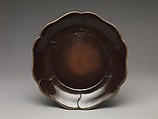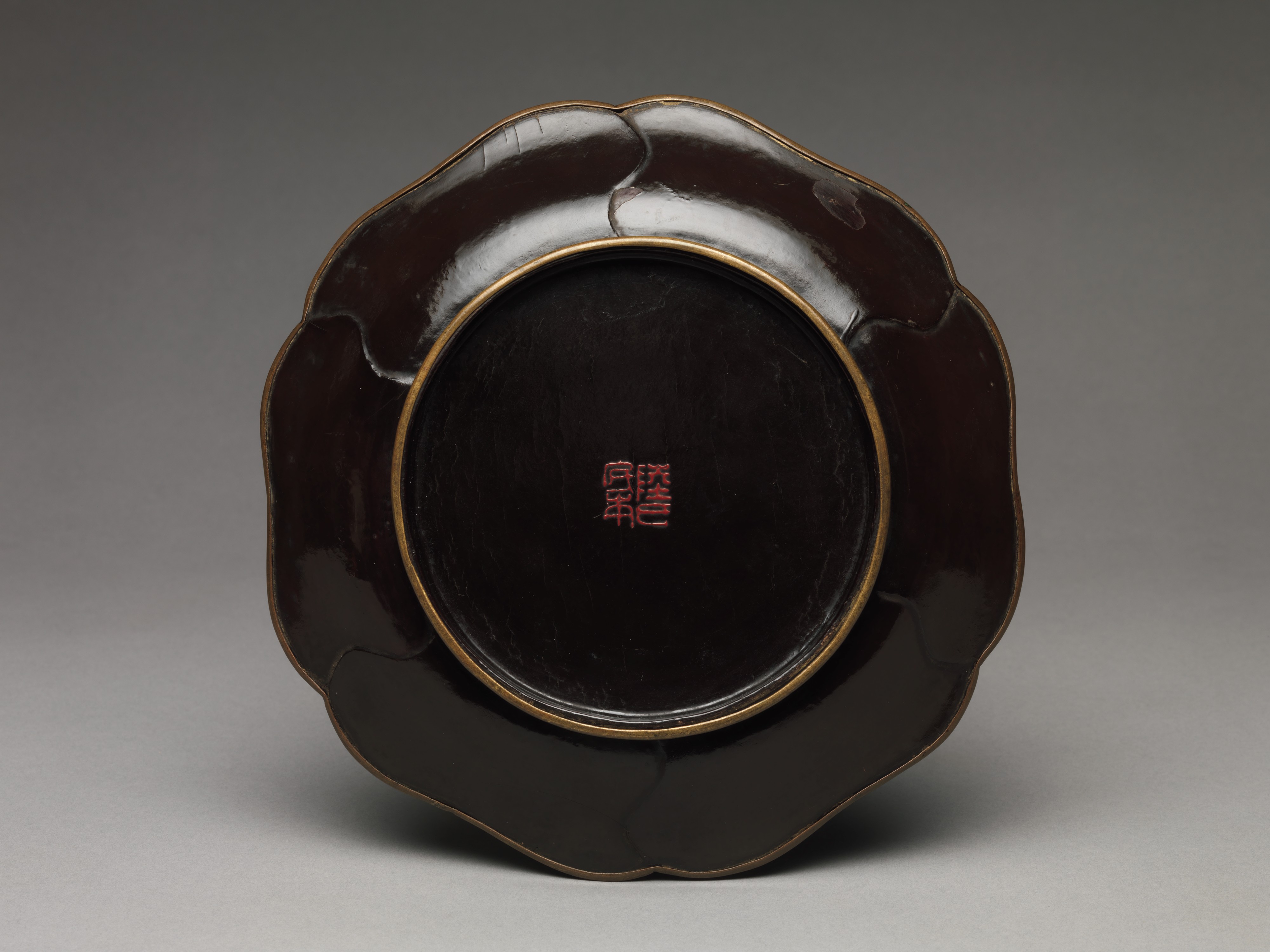Dish with lobed rim
Not on view
Found in ceramics, metalwork, and lacquer, dishes shaped with overlapping petals first appear in north China about the eleventh century, and the form later becomes a standard motif in the art of the Yuan dynasty (1271–1368). This dish, which has an inscription on the bottom giving the name of the maker or owner—a common practice during the Southern Song dynasty—was likely intended to represent a six-petal camellia, a flower often associated with joy and protection.
This image cannot be enlarged, viewed at full screen, or downloaded.
This artwork is meant to be viewed from right to left. Scroll left to view more.




